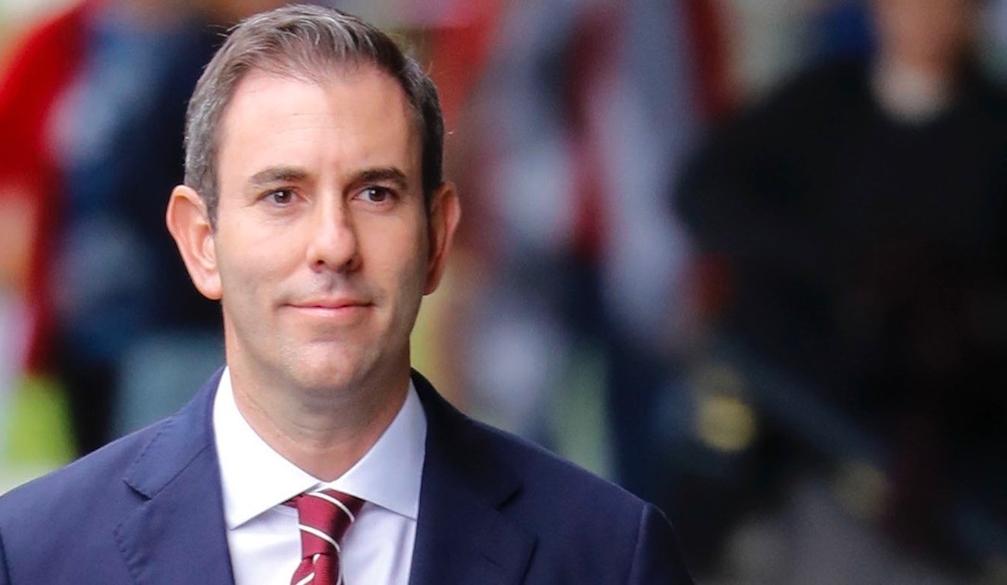Election Diary: Jim Chalmers highlights expectations of May interest rate cut
- Written by Michelle Grattan, Professorial Fellow, University of Canberra

Amid the chaos of the tariff crisis and the dark clouds internationally, there is a potential silver lining for Australian mortgage holders.
Treasurer Jim Chalmers on Monday pointed out that the markets were expecting several cuts in Australia’s interest rates this year, including one next month. There has been one cut so far, in February.
“Markets are now expecting around four interest rate cuts in Australia this calendar year”, Chalmers told a news conference. There was even a “more than 50% expectation in the markets that the next Reserve Bank interest rate cut in May might be as big as 50 basis points”.
While saying he didn’t predict or pre-empt Reserve Bank decisions, Chalmers nevertheless highlighted what the markets are expecting.
The next meeting of the Reserve Bank is on May 19-20, so a cut would be after the May 3 election.
Chalmers said the “whole world” was trying to get their heads around the impacts of these “bad decisions” on tariffs.
Releasing updated Treasury modelling of the impact, Chalmers said it expected big hits to American growth and to Chinese growth, as well as a spike in American inflation.
“We expect more manageable impacts on the Australian economy but we still do expect Australian GDP to take a hit, and we expect there to be an impact on prices here as well”.
Chalmers stressed the uncertainty around the modelling and about the economic impacts more generally. “Clearly, a series of decisions are still to be taken around the world when it comes to how countries may or may not retaliate to the decisions taken and announced by President Trump”.
The Treasury modelling says: “The effects on the Australian economy are expected to be modest, however, some parts of the agriculture, energy, mining and durable manufacturing sectors will be more adversely affected than others”.
“Australia’s real GDP is estimated to decline by 0.1 per cent and inflation to increase by 0.2 percentage points in 2025 relative to a baseline scenario with no tariffs. Over the medium-term Australia’s GDP is permanently lower; while the effect on inflation is temporary.
"The direct effects of the United States tariff changes (from bilateral trade) are expected to be small.
"Most of Australia’s exposure to US tariffs comes from reduced demand for Australian exports from major trading partners including China, Japan, South Korea, and India.
"The indirect effects of US tariffs on Chinese demand accounts for almost 80 per cent of the total impact on Australian GDP.”
Government to promise $1 billion for mental health, with emphasis on youth
Returning to Labor’s core issue of health, Prime Minister Anthony Albanese on Tuesday will promise $1 billion for free mental health services that would fill gaps in the system.
This includes
-
$225 million for 31 new and upgraded Medicare Mental Health Centres
-
More than $200 million for 58 new, upgraded or expanded headspace services
-
$500 million for 20 Youth Specialist Care Centres for young people with complex needs, and
-
$90 million for more than 1,200 training places for mental health professionals and peer workers.
The government says the new network of Youth Specialist Care Centres would ensure young people in “the missing middle” received needed specialist help. It would mean those with complex mental health needs such as personality disorders, eating disorders and early psychosis would be able to ongoing and intensive care outside hospital.
Dog day for Dutton
Saying you got it wrong is never harder than in an election campaign. Peter Dutton bowed to the inevitable in dropping his plan to force Canberra public servants back into the office, but fronting the media for the mea culpa on Monday was painful.
“I have apologised for the decision we took in relation to work from home,” he said. He added, with false optimism, “Labor’s run this scare campaign and I think we bring an end to that today.”
It wasn’t the only pain of the day for the opposition leader, who needs – to borrow his own election slogan – to get his campaign “back on track”. The message from Newspoll, the poll many Liberals take most notice of, was bad. Labor had extended its lead in a week, from 51%-49% in two-party terms to 52%-48%. This is close to the result of the 2022 election, and can only alarm the Liberal campaigners.
Some Liberals, disappointed with the Coalition campaign so far, are recalling John Howard’s mantra: you can’t fatten the pig on market day. “There’s not much evidence the work has been done,” one says.
As of late Monday, Dutton had still not produced the modelling for his controversial gas reservation scheme, which has made it more difficult for candidates to explain the policy to voters.
On another front, the Liberals have also failed to do their work properly in vetting candidates. They’ve had to disendorse their candidate for the Sydney Labor seat of Whitlam, Ben Britton.
Previously Britton had said women should be removed from combat positions in the defence force. “Their hips are being destroyed because they can’t cope with the carrying of the heavy loads and the heavy impacts that’s required for doing combat-related jobs,” he said, among other comments attacking “diversity and equity quotas” for weakening Australia’s defence.
In previous elections, parties have had to remove candidates after previous embarrassing comments have turned up. Surely the Liberals would have learned to be scrupulous in vetting. But in the New South Wales Liberal organisation, it seems to take a long time for the messages to get through.
.




















